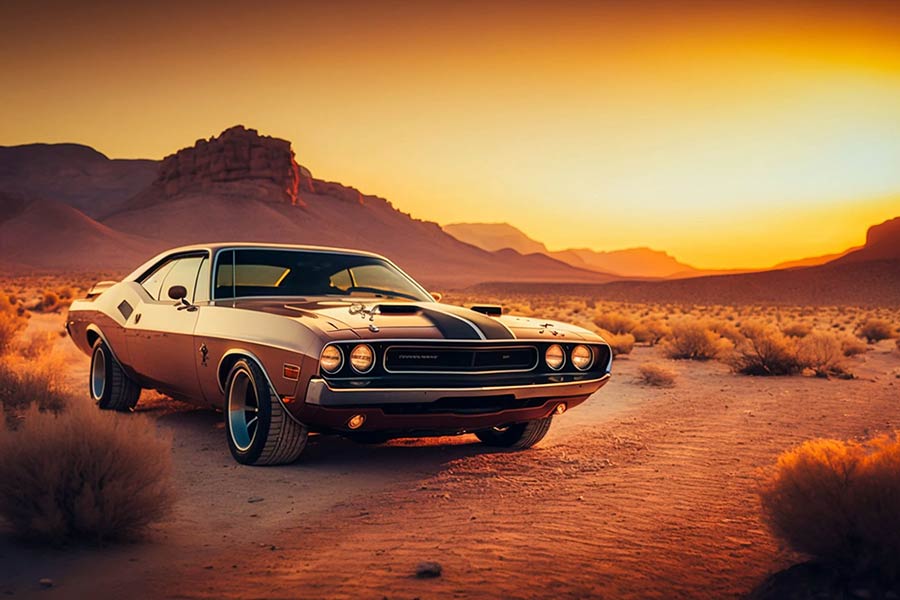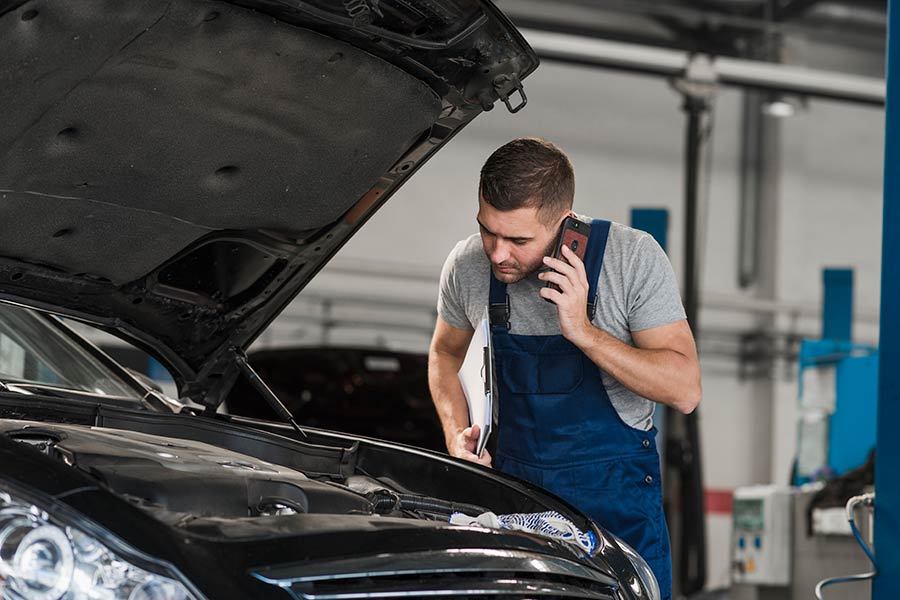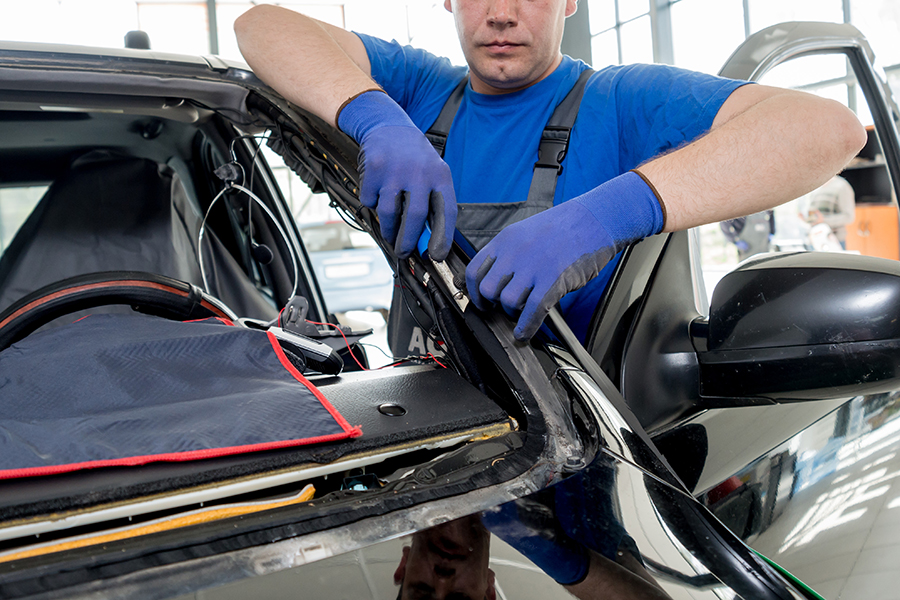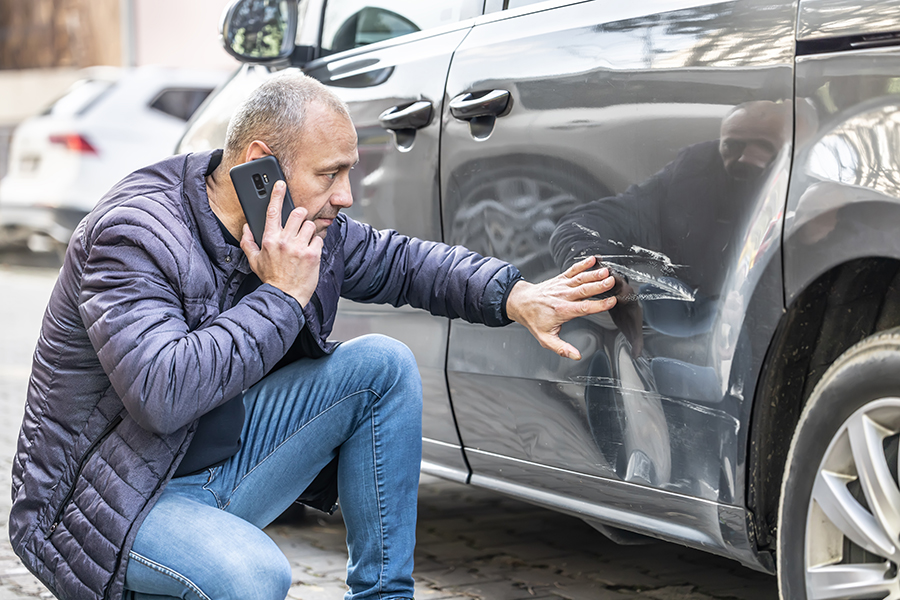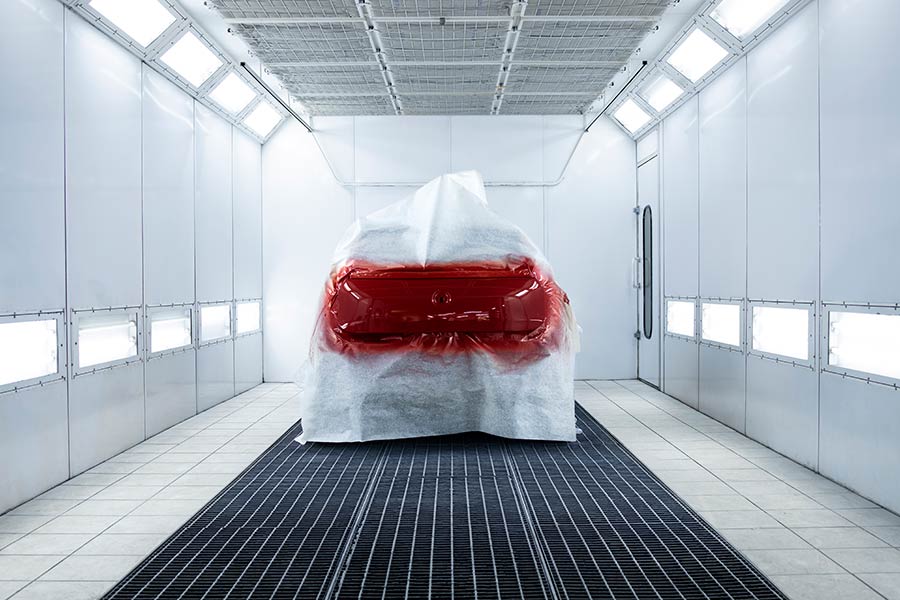Did you know that over 90% of classic muscle cars are in need of some level of body restoration? That's right, the roaring beasts from the '60s and '70s that we all admire are often hiding a few battle scars under their shiny paint. Muscle car body restoration isn't just about slapping on some new paint and calling it a day. It's an art form that breathes new life into these metal legends, ensuring they look as fierce on the road today as they did decades ago. Whether it's fixing a small dent or undertaking a full-body makeover, restoring your muscle car can be a thrilling journey back in time.
Key Takeaways
-
Starting a muscle car body restoration requires careful planning, including setting a budget and timeline, to ensure the project stays on track.
-
Disassembling the car completely is crucial for a thorough restoration, allowing you to identify all areas needing repair or replacement.
-
Rust removal is a key step in restoring the body of a muscle car; using the right techniques can prevent future corrosion and extend the car's life.
-
Learning basic metal fabrication skills can save money and allow for custom repairs, ensuring your muscle car's body is in top condition.
-
Choosing the right paint and applying it properly will not only make your muscle car look stunning but also protect it from the elements.
-
Restoring the engine and interior are as important as the bodywork to bring your muscle car back to its former glory and improve its performance.
-
Following these steps and tips can help you successfully complete a muscle car body restoration project, making your classic car shine both inside and out.
Restoration Overview
Process Phases
Restoring a muscle car involves several steps. First, you disassemble the car. This means taking it apart piece by piece. It's crucial to organize and label everything. Then, you move on to body work. This includes fixing dents and rust. Painting comes next. You choose colors and apply them carefully. Lastly, there's final detailing. This is where you make sure everything looks perfect.
Planning each phase is key. It helps avoid delays. Moving from mechanical fixes to making the car look good is exciting but needs careful transition.
Importance of Restoration
Restoring muscle cars keeps history alive. These cars are treasures from the past. Making them shine again also boosts their value.
But there's more than just money at stake here. Restoring cars is better for Earth than making new ones from scratch. It reduces waste and saves resources.
Working on these cars brings joy too. You learn a lot and feel proud of your work.
Selecting Right Tools
For a successful restoration, you need the right tools:
-
Screwdrivers and wrenches for taking things apart.
-
Sanders and fillers for bodywork.
-
Spray guns for painting.
Choosing quality tools matters a lot. They make the job safer and faster.
You can find good tools without spending too much money. Look online or ask other car enthusiasts for tips.
Disassembly Steps
Evaluation Process
Before diving into the restoration, assessing the car's condition is crucial. Look at every part, from engine to upholstery. This step helps in setting a realistic restoration plan. It's not just about what meets the eye. Rust under the paint or worn-out parts can hide deeper issues. Consulting with a professional gives an accurate evaluation. They can spot things you might miss.
Parts Removal
Now, it's time to take things apart. But, be gentle. Removing parts without causing damage is key. Use the right tools and take your time. Labeling and organizing each part as it comes off makes reassembly much easier later on. Decide which parts need restoring, replacing, or upgrading. Some might just need a polish, while others could be beyond saving.
Labeling Components
Labeling is your best friend during disassembly. Each part and fastener gets its own tag. This way, you won't mix up screws or forget where things go. Taking photos and drawing diagrams help too. For storage, use bins or shelves labeled just like your parts. This system saves headaches when putting everything back together.
Rust Removal Techniques
Identifying Rust Areas
To spot rust early, look for bubbling paint or color changes on the car's body. These signs often hide beneath the surface. Rust can weaken a muscle car's structure, making it unsafe. If you find rust, act fast. Clean the area and apply a rust inhibitor to slow its spread.
Rust areas usually form where water collects. Check under mats and inside wheel wells. Early detection can save time and money later.
Chemical Treatments
For rust removal, phosphoric acid is popular. It turns rust into a black substance that can be washed off. Always wear gloves and goggles when using chemicals. Ventilation is key to safety.
Chemicals vary in price and effectiveness. Phosphoric acid treatments are affordable but may need multiple applications for best results.
Mechanical Methods
Sandblasting and grinding are common mechanical methods to remove rust. Sandblasting is quick but can warp thin metal if not done carefully. Grinding offers more control but takes longer.
Both methods require protective gear, like masks and goggles, to keep safe from dust and debris.
Comparing both, sandblasting suits larger areas, while grinding is better for detail work.
Metal Fabrication Basics
Cutting Techniques
Selecting the right cutting tools is crucial. Plasma cutters and angle grinders are top choices for their precision. They help remove rusted sections without damaging surrounding metal.
Precision cutting techniques are essential. They ensure that only the damaged parts are removed. This prepares the cut areas well for welding or patching.
Shaping Methods
For shaping replacement metal pieces, hammers and dollies are key tools. They allow for detailed work on metal sheets. Accuracy in shaping ensures a seamless fit with the original body.
Ensuring symmetry and alignment is critical. Techniques like using a template from the undamaged side help achieve this. It guarantees that both sides of the car look identical.
Welding Essentials
Basic welding techniques are fundamental for body restoration. MIG welding is popular for its ease of use and effectiveness on thin metals.
Safety precautions cannot be overstressed. Wearing protective gear and practicing on scrap metal before starting is vital. It helps avoid mistakes on the actual project.
Choosing the right type of welder matters. For muscle car restoration, a welder that can handle different thicknesses without warping the metal is ideal.
Painting Muscle Cars
Surface Preparation
Before applying any paint, proper preparation of the muscle car's body is crucial. This involves sanding down the surface to remove old paint and imperfections. It's essential to work in a clean, dust-free environment to avoid contaminants sticking to the body. Techniques like wet sanding can achieve a smooth surface, ready for primer.
Primer Application
Choosing the right primer is key for rust prevention and ensuring the paint adheres well. Apply primer in even coats, using a spray gun for consistency. Between each coat, allow proper curing time as recommended by the manufacturer. This step is vital for a durable finish.
Color Coating
Selecting the right paint color can be exciting yet daunting. Opt for high-quality automotive paint that matches your vision. Apply it in thin, even layers to avoid drips or unevenness. Control of temperature and humidity is crucial during this phase to prevent flaws.
Finishing Touches
After painting, apply polishing compounds and wax to achieve that showroom finish. Carefully reinstall any parts removed during painting, checking their functionality. For those seeking perfection, professional detailing can add that final touch of excellence.
Engine Restoration
Overhaul Procedures
Restoring the engine and drivetrain is crucial for bringing a muscle car back to life. This process involves taking apart the engine, cleaning all parts, and replacing what's worn out. Originality and modern performance can both be important. It's about finding the right mix. For those tricky tasks, getting help from pros is smart.
e folks want their ride as it was in the '60s or '70s. Others might add newer tech for more power. Both ways have their fans.
Performance Enhancement
To boost horsepower and torque, consider several upgrades. You might swap out the exhaust system or tweak the carburetor settings. Integrating modern tech should keep the car's spirit intact. Think fuel injection systems that look old-school but work like new.
Improving handling is also key. Upgraded shocks and tires can make a big difference. But remember, adding power means nothing if your car isn't reliable.
Reliability Improvements
Safety comes first, so upgrading electrical systems, brakes, and suspension is wise. These changes make driving safer and more enjoyable. After restoring your muscle car, keeping up with maintenance keeps it running smoothly.
Reliability isn't just about avoiding breakdowns; it's about preserving your car’s value and joy over time. Regular check-ups are part of this commitment.
Interior Refurbishment
Upholstery Renewal
Choosing the right materials for your muscle car's interior is crucial. Look for fabrics that either match the original design or provide a more luxurious feel. For seat covers, headliners, and carpets, both repair and replacement options exist. It's often best to seek professional upholstery services to ensure top-notch results.
Repairing old upholstery can breathe new life into the car's interior. Professionals can match colors and patterns almost perfectly.
Dashboard Restoration
The dashboard is the control center of your muscle car. Start by cleaning every nook and cranny. If parts are beyond repair, consider replacements that keep the car's era in mind. Choosing between keeping everything original or adding modern touches depends on personal preference. However, ensuring all gauges and indicators work correctly is non-negotiable for safety.
etimes, minor repairs can fix dashboard issues without needing full replacement.
Accessory Upgrades
Integrating modern conveniences into your classic ride enhances its usability without compromising its vintage charm. Balance is key when adding features like an updated sound system or air conditioning. These upgrades should not overshadow the car's original aesthetics but rather complement them.
Popular choices include Bluetooth audio systems and climate control features that are discreetly installed.
Final Assembly Tips
Detailing Process
After refurbishing the interior, detailing becomes crucial. It starts with a thorough cleaning of every surface. Then, polishing brings out the shine in your muscle car's paint. Finally, applying wax protects the paint and prevents rust. This step is vital for preserving your restoration work.
Detailing isn't just about the exterior. The interior deserves attention too. Use quality cleaners and conditioners for the upholstery and dash. This maintains, or even restores, that new-car feel inside.
Quality Checks
Once detailing is done, it's time for quality checks. These should cover safety, performance, and aesthetics. Checkpoints include brakes, lights, engine performance, and paint finish. A professional inspection can give you peace of mind. It ensures your muscle car is safe and performs well.
Regular check-ups help maintain the quality of your restoration work. They catch issues before they become serious problems.
Test Drives
Test drives are key after assembly. They help identify any lingering issues with the car. Properly breaking in newly installed components is important too. It ensures they perform as expected.
During test drives, monitor your muscle car's performance and handling closely. Pay attention to noises or vibrations that weren't there before.
Restoration Planning
Financial Planning
Creating a budget is your first step. It helps you see the big picture. Set aside money for both expected and unexpected costs. A good rule is to have a contingency fund of at least 20% of your total budget.
You can save money by doing some work yourself. Yet, don't skimp on materials that affect safety or long-term durability.
Time Estimates
Restoring a muscle car can take anywhere from a few months to several years. The time needed depends on the car's condition and how much work you plan to do. Be patient. Rushing can lead to mistakes or lower quality work.
Plan your restoration around other life commitments. This approach ensures you have enough time to dedicate to the project without feeling overwhelmed.
Parts Availability
Finding parts for specific models can be tough. Start by connecting with other muscle car enthusiasts. Many clubs exist for this purpose. They can be great resources.
Look into specialty suppliers and salvage yards too. They often have hard-to-find parts that regular stores don't carry.
Final Remarks
Reviving a muscle car is no small feat, but you've got the roadmap now. From tearing it down to the last bolt, battling rust, bending metal, slapping on paint, overhauling the engine, sprucing up the interior, and piecing it all back together—each step is a leap towards bringing a beast back to life. It's sweaty, it's gritty, but boy, is it rewarding. You're not just fixing up a car; you're breathing life into history.
hat's stopping you? Roll up your sleeves and dive in. Each dent fixed and every engine roar brought back is your victory. And remember, you're not alone in this. There's a whole tribe of muscle car revivalists out there. Share your journey, swap tales of triumph and despair, and keep the muscle car legacy roaring loud and proud. Let's hit the road and make some noise!
Frequently Asked Questions
What is the first step in muscle car body restoration?
The first step is disassembly. You'll carefully take apart your muscle car, keeping track of every piece. It's like a puzzle you're preparing to clean, repair, and put back together.
How do I deal with rust on my muscle car?
Rust removal techniques vary, but the most common method involves sandblasting or using chemical rust removers. Think of it as giving your car a deep cleanse to get rid of those pesky blemishes.
Can I fabricate metal parts for my muscle car at home?
Yes, with basic metal fabrication skills, you can create or repair parts. It's akin to sculpting your own custom jewelry for your ride.
What's the best way to paint a restored muscle car?
Painting requires precision. After prepping the surface, apply primer, color coats, and clear coats. It's like makeup for your car, enhancing its beauty and protecting it.
How detailed should engine restoration be?
Engine restoration should be thorough. Rebuild or replace worn components to ensure it runs smoothly. Imagine giving your car's heart a health check-up and tune-up.
Is interior refurbishment necessary in muscle car restoration?
Absolutely! Refurbishing the interior breathes new life into your car, making it look and feel brand new from the inside out. It's like redecorating your favorite room.
What are some final assembly tips for muscle car restoration?
During final assembly, double-check all connections and fittings. It’s crucial to ensure everything fits perfectly together – think of it as ensuring all pieces of a puzzle fit snugly after a thorough cleaning and painting session.
